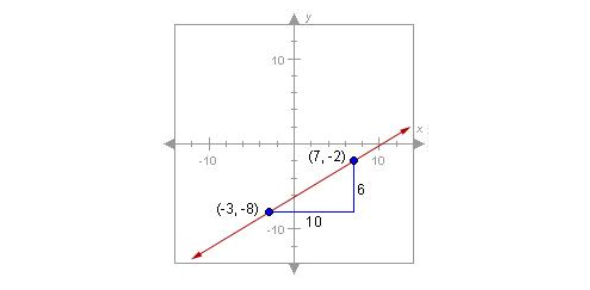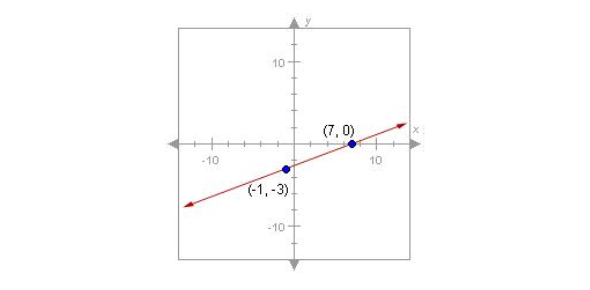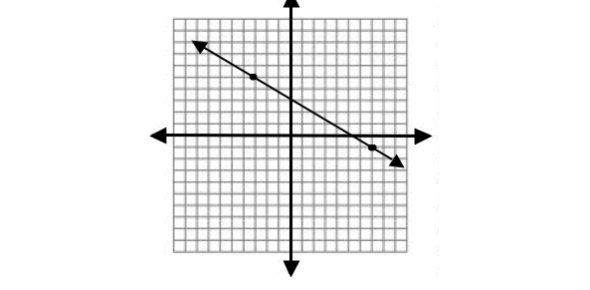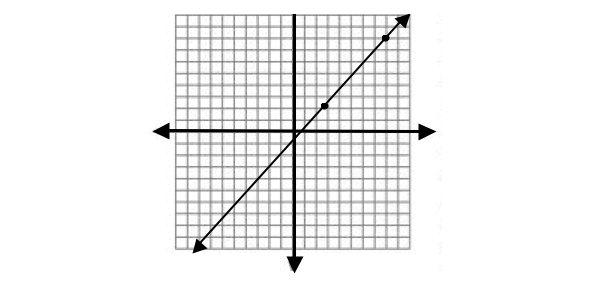Linear Functions Of Slope Quiz

When it comes to linear functions, the slope of a line or hill is calculated by the ratio of the vertical change between two points to the horizontal change between those two same points. Can you calculate it?
- 1.
Find the slope of the line.
Explanation
The answer options provided are all equivalent representations of the same value, which is the slope of the line. The slope is a measure of how steep a line is, and it represents the ratio of the vertical change (rise) to the horizontal change (run) between any two points on the line. In this case, the slope is 1/4 or 0.25 or 0.25, all of which indicate that for every 1 unit increase in the horizontal direction, the line increases by 1/4 or 0.25 or 0.25 units in the vertical direction.Rate this question:
- 2.
Find the slope of the line.
Explanation
The answer choices provided are three different representations of the same number: 1/5, 0.2, and 0.2. They all represent the slope of the line. The slope of a line measures the steepness of the line and is calculated as the change in the y-coordinates divided by the change in the x-coordinates. In this case, all three representations indicate that the line has a slope of 1/5 or 0.2 or 0.2.Rate this question:
- 3.
Find the slope of the line.
Explanation
The given answer options are 3/5, 0.6, and 0.6. These options represent the slope of the line. The slope of a line is a measure of how steep the line is. It is calculated by dividing the change in the y-coordinate by the change in the x-coordinate between two points on the line. In this case, the slope can be represented as 3/5, 0.6, or 0.6.Rate this question:
- 4.
Find the slope of the line.
- 5.
Find the slope of the line.
- 6.
Find the slope of the line.
Explanation
The slope of a line is a measure of how steep the line is. In this case, the given answer of 1 suggests that the line has a slope of 1, which means that for every unit increase in the x-coordinate, the y-coordinate also increases by 1. This indicates a positive and constant rate of change between the x and y coordinates of the line.Rate this question:
- 7.
Find the slope of the line.
Explanation
The slope of a line is a measure of how steep the line is. In this case, the given answer options of .5, 0.5, and 1/2 all represent the same value, which is the slope of the line. This means that the line has a slope of 1/2, which indicates that for every increase of 1 unit in the x-coordinate, the y-coordinate increases by 1/2 unit.Rate this question:
- 8.
Find the slope of the line.
Explanation
The slope of a line is a measure of how steep the line is. In this case, both 1.5 and 3/2 represent the same value, which is the slope of the line. Therefore, either 1.5 or 3/2 can be considered the correct answer for the slope of the line.Rate this question:
- 9.
Find the slope of the line.
Explanation
The given answer is a list of three values: 3/8, .325, and 0.325. These values do not represent the slope of a line. A slope is a single numerical value that represents the steepness of a line. Therefore, the explanation is that the given answer is incorrect.Rate this question:
- 10.
Find the slope of the line.
Explanation
The slope of a line is a measure of how steep the line is. In this case, the given answer of 6 indicates that the line has a slope of 6. This means that for every unit increase in the x-coordinate, the y-coordinate increases by 6 units.Rate this question:
- 11.
Find the slope of the line.
- A.
0
- B.
Undefined
- C.
0/12
- D.
12/0
Correct Answer
A. 0Explanation
The slope of a line is determined by the change in the y-coordinates divided by the change in the x-coordinates between two points on the line. In this case, the line has a constant y-coordinate of 0, which means that there is no change in the y-coordinate regardless of the change in the x-coordinate. Therefore, the slope of the line is 0.Rate this question:
-
- 12.
Find the slope of the line.
- A.
-6/10
- B.
6/10
- C.
-3/5
- D.
3/5
Correct Answer
C. -3/5Explanation
The slope of a line is defined as the change in y-coordinates divided by the change in x-coordinates between any two points on the line. In this case, the slope is -3/5. This means that for every 5 units we move to the right on the x-axis, we move 3 units downwards on the y-axis. The negative sign indicates that the line is decreasing as we move from left to right.Rate this question:
-
- 13.
Find the slope of the line.
- A.
-5/-6
- B.
5/6
- C.
-5/6
- D.
-6/5
- E.
6/5
Correct Answer
E. 6/5Explanation
The slope of a line is determined by the ratio of the change in the y-coordinates to the change in the x-coordinates between two points on the line. In this case, the slope is 6/5 because the numerator represents a change in the y-coordinate of 6 and the denominator represents a change in the x-coordinate of 5. This means that for every 5 units the x-coordinate increases, the y-coordinate increases by 6 units.Rate this question:
-
Quiz Review Timeline +
Our quizzes are rigorously reviewed, monitored and continuously updated by our expert board to maintain accuracy, relevance, and timeliness.
-
Current Version
-
Aug 06, 2024Quiz Edited by
ProProfs Editorial Team -
Feb 15, 2012Quiz Created by
Tjkim
 Back to top
Back to top



.webp)
.webp)

.webp)
.webp)
.webp)

.webp)

.webp)
.webp)

